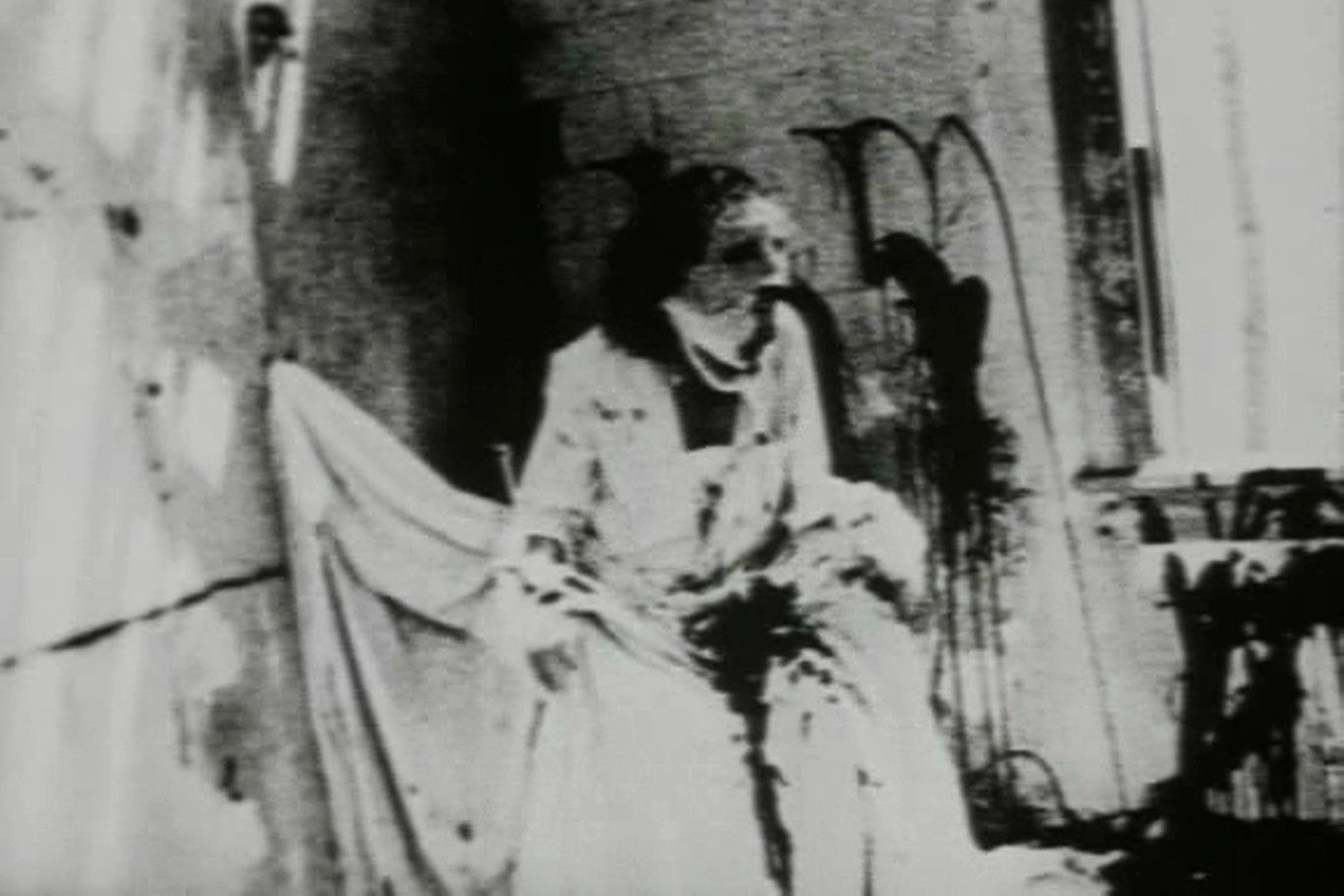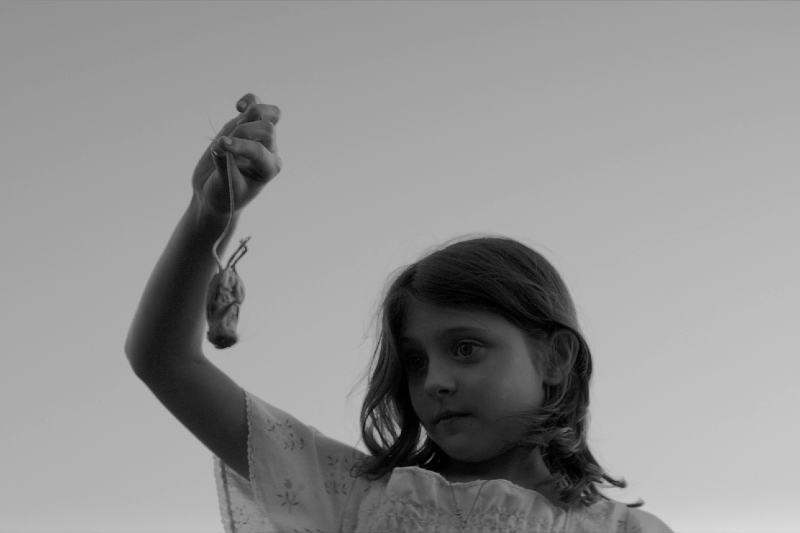Editorials
‘Begotten’ Is a Ritual Captured on Film
February 21st, 2022 | By Marc Paterson

From Satanic rites to campfire ghost stories, horror is full of rituals. But only one film can claim to be a ritual during both its production and in the final release. Begotten (1989) is a disturbing vision of sacrifice, death, and rebirth that borders on the unwatchable. The story behind its creation — and its creator — is one that descends deep into the occult, alternate realities, and how art is a ritualized ceremony of catharsis.
Become a Free Member on Patreon to Receive Our Weekly Newsletter
You could be mistaken for thinking this movie was made in a time before cinema; some impossible relic buried deep in the earth, waiting to unleash its power into the world. The pops and hisses of the damaged soundtrack are primordial. The title card reads, “Here lives the incantation of matter”. Something breathes and wheezes in the celluloid. “Like a flame burning away the darkness, life is flesh on bone, convulsing above the ground.”
Begotten’s unflinching eye records death and rebirth in gut-wrenching clarity. Its depiction of gore is relentlessly repetitive — it is, in fact, an abstract expressionist snuff movie. It’s a spiritual purge of the toxins of human existence. Begotten has to be seen to be believed, although the stark, bleached-out white and inky black contrast at times makes it impossible to discern what’s haunting your screen. It’s like the art of Franz Kline and Francis Bacon brought into horrific, pulsating life.
If you can stomach the opening scene, you will be rewarded with a brief respite before the brutality resumes. The mind and body are subjected to a psychic battering by a visual and audible ordeal. Like any torture, you will long for it to end.
When the ordeal is over for both the participants and the viewer, the scratched soundtrack loops like a tiny heartbeat, signaling rebirth. If all this sounds deliberately obscure then it’s because this is an experience one has to engage. Words cannot incantate this matter.
Man, myth and magic
At the age of eleven, director Edmund Elias Merhige was over for lunch at a friend’s house. That evening they had a guest; the extra seat at the table was for Vittorio Storaro, the Oscar-winning cinematographer most famous for Apocalypse Now. A passion for photography was born. In his teens, Merhige discovered the work of Federick Nietzsche, in particular, The Birth of Tragedy. It cemented in the young Merhige’s mind the idea that art held the keys to other realities.
In 1983, when Merhige was 19, he was thrown from a friend’s car in a vehicular collision. That night he was robbed of his clothes and wallet by vagrants, who thought him dead. His near-death experience, he says, showed him planes of reality beyond our own. He devoted his time to learning about Hermetic philosophy and the occult. That, and the pursuit of art. He applied to the State University of New York’s film school and got accepted.
It was the inspiration from a Japanese dance troupe that led to the formation of the Theater of Material, which became the backbone of the Begotten production. “I was very moved by [the work of the Sankui Juku dance troupe],” Merhige explains in A Critical Cinema 3. “They had a core group of people who worked together, slept together, ate together … I wanted to achieve something similar.”
The ritual of production
Merhige’s company collaborated in the development process, and even made up both cast and crew during the production. They performed intense breathing exercises that brought members to a point of hysteria and panic. They were subject to hypnosis, helping them access a kind of collective consciousness. The point of all this was to ritualise the filmmaking process. Merhige wanted the cast to access an alternate reality that he had experienced as a child when sick with fever.
Shooting took place at a construction site between New York and New Jersey over the course of 20 days. Workers on the site would help construct landscapes for the film. Merhige self-financed most of the production and offered food and board as payment.
Merhige wanted the movie to look like it had been exhumed from before the time of Christ. He took pains to age the physical film by running it against sandpaper. He even went to the extreme of building his own optical printer to process the footage by hand. In a reversal of the alchemists’ principles, Merhige sought to make his work imperfect, to degrade and corrupt each frame. He sought to put the audience through a similar ordeal; he wanted to initiate a higher state of consciousness through the spell of the moving image.
The film processing ritual was punishing in itself. It took, according to Merhige, eight to ten hours of optical work per minute of screentime. His time doing rotoscoping sequences for Disney no doubt gave him the capacity for patience.
Finding distribution proved difficult. Most mainstream companies laughed him out of the door, stating that it didn’t fit any prescribed genre that they could package and sell. Merhige became his own distributor, touring the film around museums. It wasn’t until the well-known critic Susan Sontag saw a screening and took a copy to the Berlin Film Festival that the film world started taking notice. The movie’s rarity became its making. A small cult following slowly grew out of an underground bootleg movement. This cult exploded with the advent of the internet.
As the legend of this movie spread, it eventually came to the attention of Brian Hugh Warner, a singer-songwriter, actor, and painter from Ohio. We know him better as Marilyn Manson. He clearly took a more nihilistic interpretation of the film and promptly recruited Merhige to direct the music video to Antichrist Superstar. The song ends with the words, “You might as well kill yourself. You’re already dead.”
In Manson’s Cryptorchid video, Begotten is reborn, reformed beyond its original meaning. As controversial and disturbing as the images appear when married to Manson’s music, the true power of Merhige’s classic art-shocker is lost.
The legacy
Begotten’s influence is now widespread and its imagery has been the mood board for gothic heavy metal videos ever since. Its oily writhing energy can be felt in Can Evrenol’s demonic torture porno Baskin. Director Panos Cosmatos has stated that the flashback scenes in Beyond the Black Rainbow were directly inspired by Begotten. He wanted the scene to “feel like a decayed artifact”.
And so Begotten is an initiation, one that functions to alter the viewers’ perception of existence, to alter their existence entirely. It seeks to put the viewer through an ordeal, in the hope that they come out renewed and enlightened on the other side. It may be unwatchable — but it is also, in the eyes of many, absolutely essential.
(For more on Begotten, check out interviews with Edmund Elias Merhige on both YouTube and in Filmmaker Magazine.)


